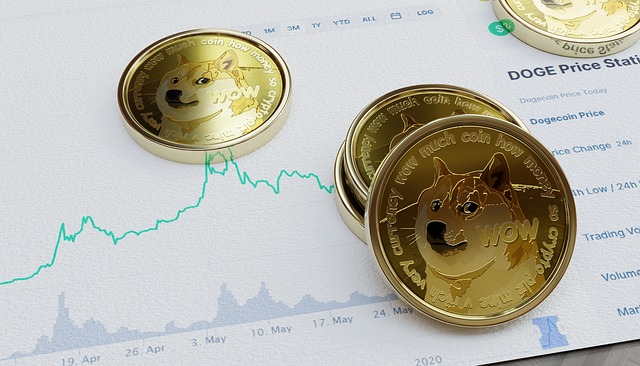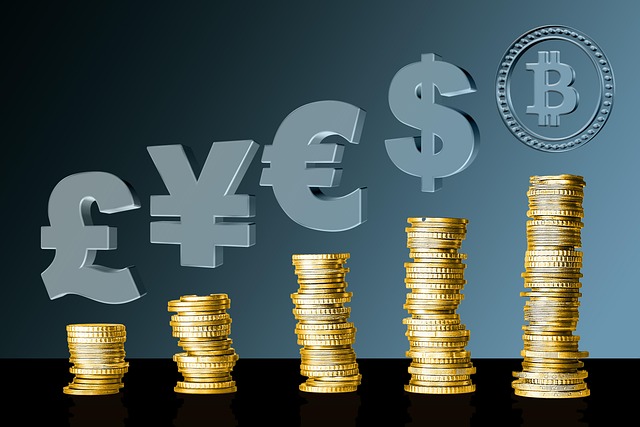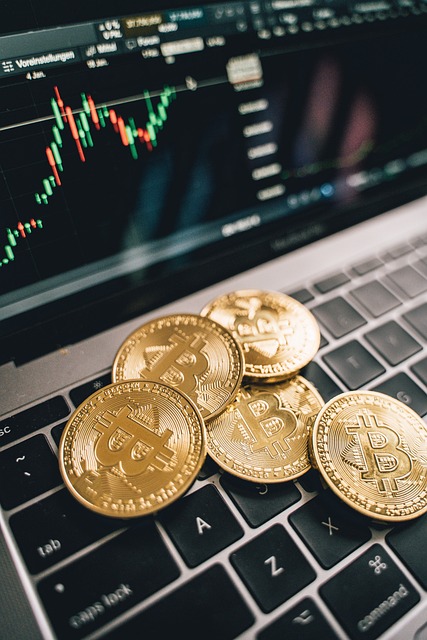Bitcoin Live Price Chart Binance: Real-Time Trading Guide
Author: Jameson Richman Expert
Published On: 2025-10-21
Prepared by Jameson Richman and our team of experts with over a decade of experience in cryptocurrency and digital asset analysis. Learn more about us.
Bitcoin live price chart Binance is the essential tool for traders and investors who need accurate, real-time pricing, charts, and market context when making decisions. This article explains what the Binance live price chart shows, how to use it effectively on desktop and mobile, the technical indicators and patterns that matter, practical trading examples, API and latency considerations, fee comparisons, and security best practices to help you trade smarter and safer.

Why the Binance Live Price Chart Matters
The live price chart on Binance aggregates market data, displays price action in multiple timeframes, and offers built-in charting tools (often powered by TradingView) so you can analyze trends, volume, and order flow. Because Binance is one of the largest cryptocurrency exchanges by trading volume, its live chart provides deep liquidity signals and fast data — crucial for scalpers, swing traders, and long-term holders alike.
What You’ll Learn in This Guide
- How to access and customize the Bitcoin live price chart Binance
- Interpreting candlesticks, order books, and depth charts
- Practical indicator setups and example strategies
- APIs, latency, and reliable live feeds
- How fees and liquidity affect executions (with further reading)
- Security best practices and recommended tools
Accessing the Bitcoin Live Price Chart on Binance
Binance offers charting on both its web interface and mobile app. The desktop experience is more feature-rich because it integrates TradingView’s advanced charting tools. Here’s a quick walkthrough.
Desktop (Web) Steps
- Go to the Binance website: Binance Official Site.
- Log in and navigate to Trade > Classic or Trade > Advanced — the advanced view provides more indicators and drawing tools.
- Search for the BTC trading pair you want (e.g., BTC/USDT, BTC/BUSD).
- Customize the chart: change the timeframe, add indicators (MA, RSI, MACD), and toggle the depth and order book panels.
Mobile App Steps
Open the Binance app, tap Markets, select BTC, then Trade. The chart is interactive: pinch to zoom, change timeframes, and add indicators via the chart settings.
Core Components of the Live Price Chart
Understanding each element will help you read the market more effectively.
Candlesticks and Timeframes
Candlesticks display open, high, low, and close (OHLC) for a chosen interval. Common timeframes: 1m, 5m, 15m, 1h, 4h, daily, and weekly. Short timeframes suit scalping; longer timeframes are better for trend analysis.
Volume Bars
Volume confirms price moves. Rising price with rising volume is more reliable than a move on thin volume.
Order Book and Trade History
The order book shows current bids and asks; trade history shows executed trades. Watching large order walls or a sudden sweep in the order book can hint at short-term support/resistance or liquidity absorption.
Depth Chart
The depth chart visualizes cumulative buy and sell orders at price levels. A large imbalance can show where liquidity and short-term support/resistance exist.

How to Read Candlestick Patterns — Practical Examples
Recognizing simple patterns helps spot reversals and continuations.
- Doji: Indecision in the market. Use it with volume and trend context.
- Hammer / Hanging Man: Potential reversal at bottoms (hammer) or tops (hanging man).
- Bullish/Bearish Engulfing: A strong reversal sign when a candle fully engulfs the previous candle.
- Inside Bar: Consolidation; often precedes breakout moves.
Example: On a 1-hour BTC/USDT chart, if a strong bullish engulfing candle forms on increased volume following a pullback to the 50 EMA, it can signal a continuation of the uptrend. Confirm with RSI trending higher and break above recent swing high before entering.
Popular Indicators on Binance Chart and How to Use Them
Below are practical indicator setups and how traders commonly use them with the Binance live chart.
Moving Averages (MA, EMA)
Common setups: 50 EMA + 200 EMA for trend direction. A bullish signal is when the 50 EMA crosses above the 200 EMA (golden cross); bearish is the reverse.
Relative Strength Index (RSI)
RSI shows momentum. Common thresholds: 70 (overbought) and 30 (oversold). Divergence between price and RSI can signal a weakening trend.
MACD
MACD crossover and histogram help identify momentum shifts. Combine MACD with volume for more reliable entries.
Bollinger Bands
Bands expand and contract with volatility. A squeeze often precedes a breakout. Price touching the upper band during strong momentum suggests continuation; touching lower band suggests potential reversal if other indicators agree.
VWAP (Volume-Weighted Average Price)
VWAP is used by institutional traders to assess average price paid. Day traders use it as dynamic support/resistance for intraday trades.
Concrete Trading Strategies Using the Binance Live Chart
Below are example strategies that use the live chart tools. These are educational examples, not financial advice.
1) Simple Trend-Following (Daily/4H)
- Indicators: 50 EMA, 200 EMA, RSI
- Signal: 50 EMA above 200 EMA + pullback to 50 EMA with RSI above 45.
- Entry: Market or limit near 50 EMA after bullish confirmation candle.
- Stop Loss: Below recent swing low or 200 EMA (depending on risk tolerance).
- Take Profit: Trailing stop or previous resistance zone.
2) Breakout Strategy (15m/1h)
- Indicators: Bollinger Bands, volume
- Signal: Consolidation with Bollinger squeeze followed by breakout candle with above-average volume.
- Entry: Buy on breakout candle close above consolidation high.
- Stop Loss: Below consolidation low.
- Take Profit: Based on measured move or trailing stop.
3) Mean Reversion (Scalping on 1m–5m)
- Indicators: VWAP, 20 EMA, RSI (short)
- Signal: Price deviates far from VWAP and shows RSI oversold/overbought.
- Entry: Quick fade toward VWAP.
- Stop Loss: Tight, small percentage; high frequency.

Risk Management and Order Types on Binance
Good charting is only one part of trading. Risk management preserves capital and lets you stay in the game.
- Position sizing: Risk only a small percentage of capital per trade (1–2%).
- Stop losses: Always set a stop loss; use limit or stop-limit to control execution.
- Take profit orders: Consider multiple partial targets to lock gains.
- Order types: Market, limit, stop-limit, OCO (One Cancels the Other) — use them according to liquidity and volatility.
Latency, Data Sources, and Binance API
Traders who require high-frequency or automated trading must understand data latency and APIs.
Binance Market Data
Binance provides real-time market data via its public WebSocket streams and REST API. WebSockets push tick-level updates for trades, order books, and aggregated candles. For developers and advanced traders, the WebSocket API is the recommended choice for live price charts and order execution.
Learn more directly from Binance’s documentation: Binance API Documentation.
Latency Considerations
Latency can be influenced by network speed, server proximity, and the quality of the provider. If milliseconds matter (e.g., for arbitrage or ultra-fast scalping), consider colocating servers near exchange infrastructure and using direct exchange websockets instead of third-party aggregators.
Exchange Fees, Liquidity, and Comparative Considerations
Fees and liquidity directly affect execution quality when using the live price chart for trading. Binance’s fee structure is competitive, but high-frequency traders should account for taker fees and funding costs on perpetuals.
For broader context on how transaction fees differ across exchanges and how they impact strategies, see this analysis on MEXC transaction fees: Understanding MEXC Transaction Fees in 2025. Comparing fee structures across platforms can change the profitability of short-term strategies.
Liquidity also matters. High daily volume reduces slippage. For an overview of liquidity across major venues, review this deep dive into high-volume exchanges: Top Stock Exchanges by Daily Volume in 2024. Higher institutional participation usually correlates with tighter spreads and better execution.

Automation, Bots, and Cautions
Many traders automate strategies connected to live price charts. Automation can execute faster and remove emotion, but it also brings risks.
- Backtest strategies over multiple market regimes before live use.
- Monitor bots; automated systems can fail due to API changes, outages, or unexpected market events.
- Beware of third-party bot vendors; read reviews and community feedback (for instance, community discussions about bots like the Bybit AI trading bot can offer real-user insights).
Security Best Practices When Using Binance Charts and Trading
Charts are harmless by themselves, but they’re typically used for placing orders on exchanges where security matters:
- Enable two-factor authentication (2FA) and use an authenticator app, not SMS when possible.
- Use strong, unique passwords and a password manager.
- Be cautious with API keys: only give necessary permissions (read-only for charting; trade permissions for bots with strict IP whitelisting if available).
- Keep a cold storage wallet for assets you don’t plan to trade; only keep active trading capital on exchanges.
- Verify URLs and avoid phishing: bookmark official exchange pages and never enter credentials through emailed links.
How the Binance Chart Compares to Other Platforms
Binance’s charting is robust due to TradingView integration, deep liquidity, and many listed products (spot, futures, options). Still, traders might prefer alternative charting for some features:
- TradingView — Advanced community scripts and cross-exchange comparison tools: TradingView.
- Coinbase Pro — Simpler interface with strong regulatory presence for some users.
- Bybit / MEXC — Different fee structures and product offerings; review their fee pages before switching platforms.
Community and institutional volume can be referenced when evaluating exchanges. For perspectives on global liquidity and exchange activity, this article on top exchanges by daily volume is a useful read: Top Stock Exchanges by Daily Volume in 2024 — An In-Depth Analysis.

Cross-Market Considerations: Forex, Stocks, and Crypto
Certain traders consider how their personal or religious frameworks interact with trading. For example, questions about the permissibility of Forex in specific faith contexts are common. If you are researching ethical or religious aspects of trading, this comprehensive analysis on Forex trading in Shia Islam may provide additional perspective: Is Forex Trading Halal in Shia Islam? — A Comprehensive Analysis.
Practical Examples: Two Trade Walkthroughs Using the Live Chart
Example 1 — Swing Trade (4H Chart)
Setup: BTC/USDT, 4-hour chart. Indicators: 50 EMA, 200 EMA, RSI
- Identify trend: 50 EMA above 200 EMA — bullish.
- Price pulls back toward 50 EMA and forms a bullish engulfing candle with increased volume.
- RSI confirms momentum by moving above 50.
- Entry: Limit buy at close of engulfing candle.
- Stop: 1.5–2 ATR below entry or beneath the recent swing low.
- Target: 1:2 or 1:3 risk-reward; trail stop with 21 EMA to capture extended move.
Example 2 — Intraday Breakout (1h Chart)
Setup: BTC/USDT, 1-hour chart. Indicators: Bollinger Bands, volume
- Identify consolidation — range narrowing and BollingerBands squeeze.
- Breakout candle closes above consolidation high with volume > average 10 periods.
- Entry: Market buy on candle close or limit slightly above breakout level.
- Stop: Below consolidation low.
- Target: Measure height of consolidation and project upward; adjust with trailing stop.
Common Mistakes When Using the Live Price Chart
- Over-relying on a single indicator — combine multiple confirmations.
- Ignoring liquidity and slippage — always check order book depth on Binance.
- Trading without a plan — predefine entry, stop, size, and exit rules.
- Neglecting fees — frequent trades erode returns; compare across exchanges (see MEXC fee analysis: Understanding MEXC Transaction Fees in 2025).

Resources, Tools, and Further Reading
- Bitcoin background and technical overview: Bitcoin — Wikipedia.
- Basic Bitcoin investing guide: Investopedia — Bitcoin.
- Binance developer docs for real-time data and trading: Binance API Documentation.
- Advanced community scripts and multi-exchange charts: TradingView.
- Comparative fee and exchange insights: Understanding MEXC Transaction Fees in 2025.
- Cross-market volume perspective: Top Stock Exchanges by Daily Volume in 2024.
- Community-driven reviews on trading bots: Bybit AI Trading Bot — Reddit Real User Insights.
- Considerations about trading and ethics: Is Forex Trading Halal in Shia Islam?.
Frequently Asked Questions (FAQs)
Is the Binance live price the market price?
Binance’s live price reflects trades executed on Binance. Because different exchanges have different order books, the “market price” can differ slightly across platforms. For a global view, traders sometimes consult aggregated feeds or cross-exchange data.
Can I rely solely on the Binance chart for trading decisions?
Charts are critical, but they’re only one piece of information. Combine chart analysis with order book observation, news, macro factors, risk management, and proper execution planning.
Are there hidden costs when trading on Binance?
Fees are transparent, but watch for taker fees, funding rates on perpetuals, and slippage during volatile periods. Review fee tiers and maker/taker differences on Binance’s fee page and compare to other exchanges using the resources linked above.
How accurate are indicators on the live chart?
Indicators calculate based on the historical data on Binance. They are accurate given the source data, but signals are not guarantees — use them as statistical tools rather than certainties.
Conclusion
The bitcoin live price chart Binance is a powerful feature for traders that combines deep liquidity, advanced charting tools, and real-time data. To use it effectively, master candlestick reading, learn to combine indicators, manage risk, and be mindful of fees, latency, and security. For advanced users, Binance’s APIs enable programmatic access to live data, while third-party tools like TradingView offer expanded scripting and comparison capabilities.
Before deploying capital, practice your setups in a demo environment or with small position sizes. Stay informed on fee structures and exchange dynamics — compare exchanges and fee models using the recommended readings linked in this article to ensure your strategy remains profitable after costs and slippage.
Further reading and tools mentioned in this article:
- Understanding MEXC Transaction Fees in 2025
- Is Forex Trading Halal in Shia Islam? — A Comprehensive Analysis
- Top Stock Exchanges by Daily Volume in 2024 — An In-Depth Analysis
- Bybit AI Trading Bot — Real User Insights and Guide
Use the Binance live price chart as your primary visual tool, but complement it with robust risk controls, continuous learning, and careful consideration of fees and liquidity. Good trading starts with a clear plan and disciplined execution.